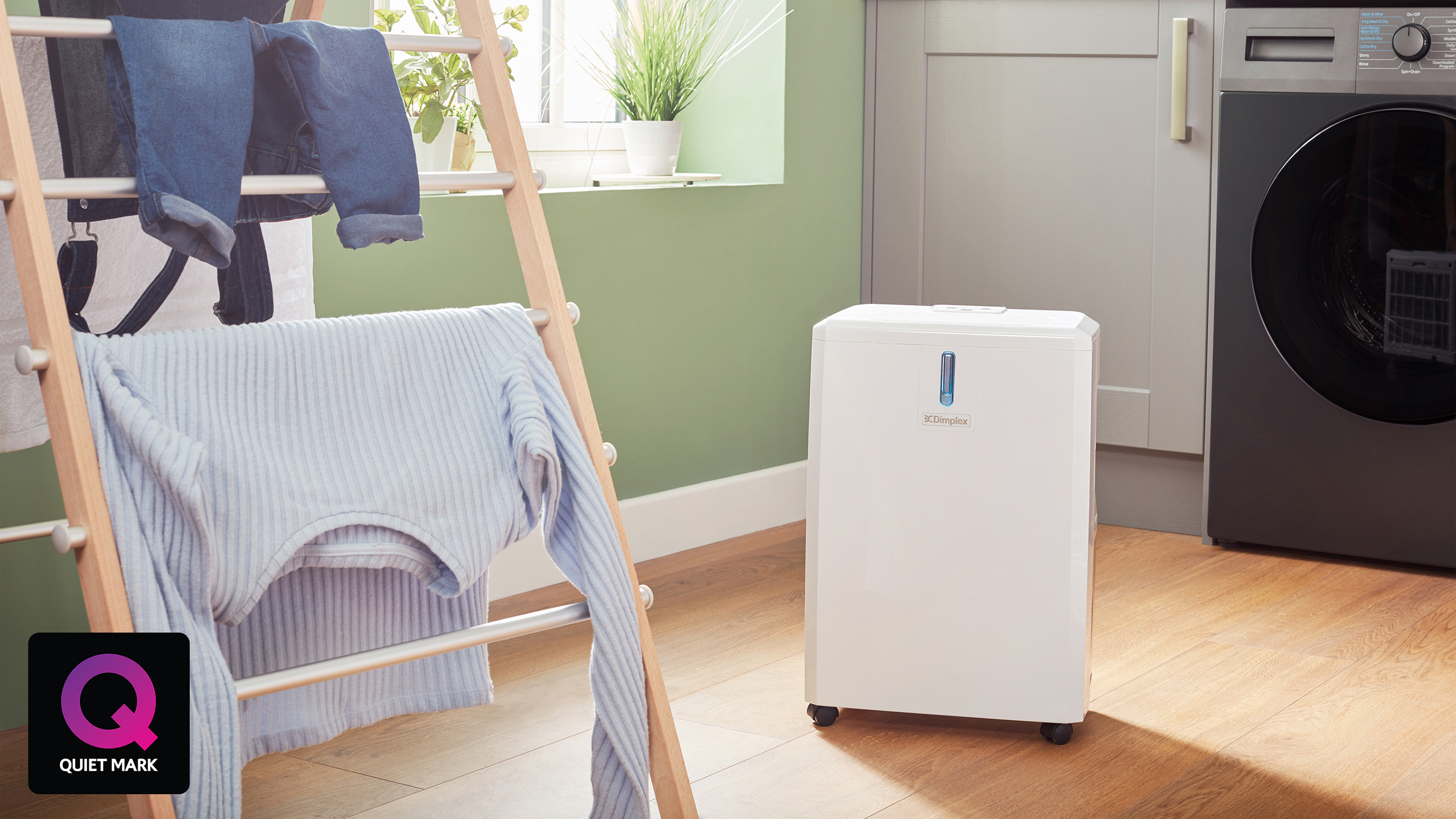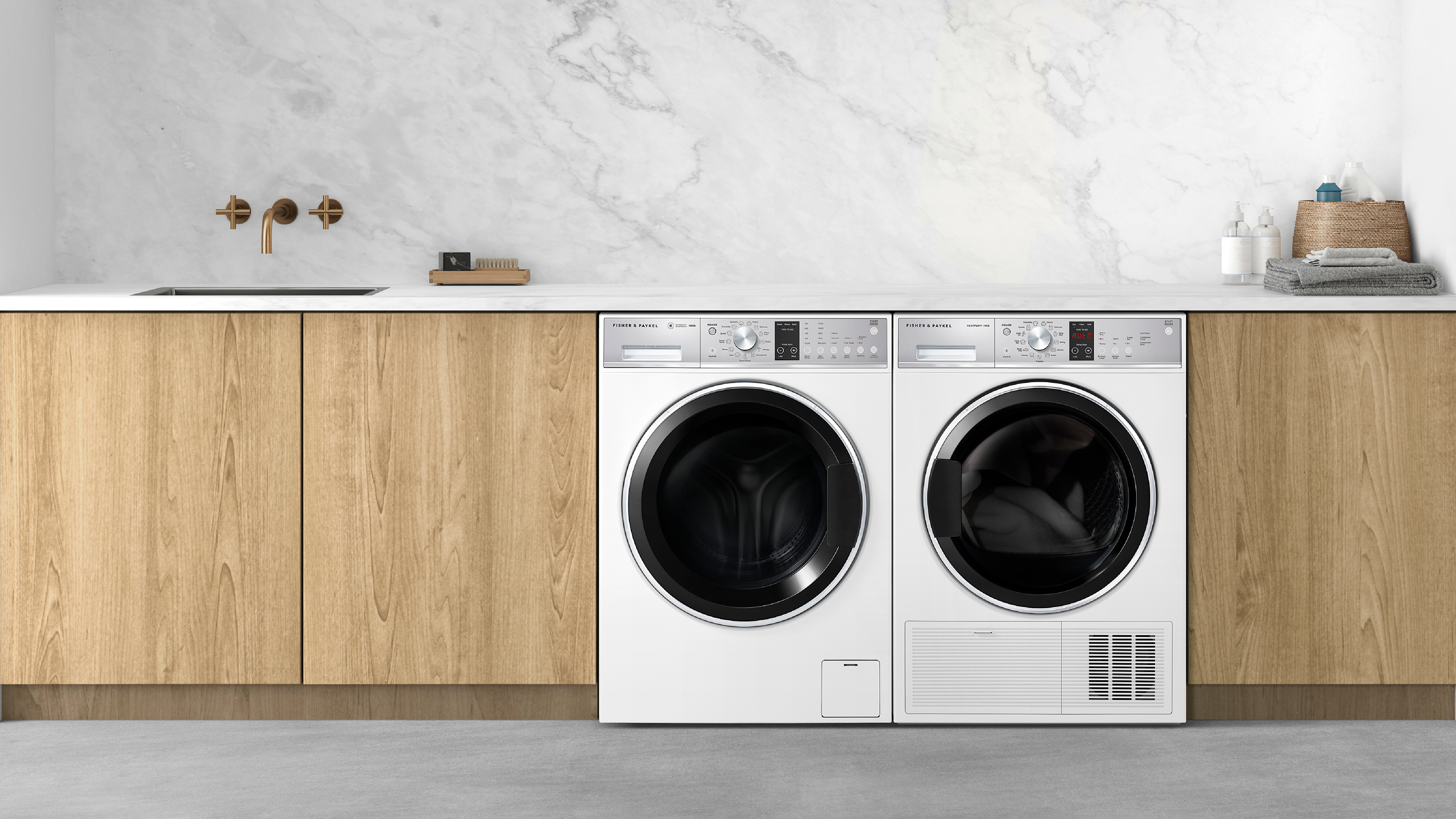Do dehumidifiers dry clothes effectively? Why they could be a good option this winter
Many people right now are asking 'do dehumidifiers dry clothes?' in a bid to cut their household bills at the same time as reaping the other benefits they offer

Do dehumidifiers dry clothes? This is a really common question these days, with energy costs and household bills at the forefront of many people's minds.
Now that our outdoor washing lines are being packed away for winter, the most obvious way to get clothes dry fast is to turn to our trusty tumble dryers — but handy though they are, they can also be notoriously energy hungry.
This has led to a rise in people looking for alternative ways to dry wet clothes — and given that dehumidifier running costs are relatively low, using these appliances is a method that many people are considering.
So, can this type of appliance be used for this purpose or should they be reserved for keeping condensation and damp at bay?
How do dehumidifiers dry clothes?
We have some good news here — dehumidifiers are not just for dealing with window condensation, you can use a dehumidifier to dry clothes too. Even better, this can be far cheaper than using your tumble dryer.
That said, some dehumidifiers are more effective at drying clothes than others so it is important to check out the various functions of the models you are interested in before buying.
Compression (or refrigeration) dehumidifiers work by taking in air from a room and passing it over a refrigerated coil. On meeting this colder surface, moisture in the air condenses and is then collected in a tank within the unit. The air is then reheated and expelled back into the room at the required humidity level.
Although they are generally purchased in order to reduce condensation, the fact that they can reduce moisture in a room and project warm, dry air, means they work as a clothes drying measure too.
You should look for a dehumidifier with a 'laundry mode' or 'clothes drying mode.' On these settings, a dehumidifier will work to filter out moisture and blow it back out at a warmer temperature, running on the highest fan speed and lowering the relative humidity to around 40%.
In order to get the most out of the dehumidifier on this setting, it is wise to close the door of the room and place the unit close to where the clothes are hanging.
Is a dehumidifier cheaper to run than a tumble dryer?
In short, yes, dehumidifier running costs are less than those for tumble dryers. That said, they can take much longer to dry clothes.
When looking at dehumidifier running costs, you need to look at the model's power rating and how much you pay for electricity per kWh. From October 2022, following the energy price guarantee, the national average price of electricity will be 34p/kWh.
Dehumidifiers are rated in Watts (W) — the higher the power, the more energy it uses. So, a model with a power consumption of 151 watts would cost 5p per hour to run — based on the calculation 0.151kWh x 34p = 5p per hour.
A model with a wattage of 400W would cost 13.2p per hour.
The cost of running a tumble dryer is usually calculated per cycle — and an average cycle tends to take around an hour. Vented and condenser tumble dryers cost around £1.70 - £1.80 per cycle (heat pump tumble dryers are far cheaper to run) which means that if you use yours twice a week, you will currently be facing bills of around £176 - £187 a year.
That said a heat pump tumble dryer are cheaper to run and could cost less than half the cost of running a vented or condenser tumble dryer.

How long does a dehumidifier take to dry clothes?
While it is certainly much cheaper to use a dehumidifier to dry clothes than it is to run the tumble dryer, it will take longer to get the same results — perhaps up to five or more hours on average. Factor this when looking at running costs.
That said, it is important to weigh up the other benefits of using a dehumidifier to dry your laundry, other than costs. These can include:
- Reduced condensation: At the same time as drying your clothes, the moisture produced will be being dealt with by the dehumidifier.
- Additional heating: The heat produced by desiccant dehumidifiers can be used to warm up your home meaning less reliance on other heating methods.
- Less risk of damp or mould: Wet clothes hanging around can result in damp patches on walls — not so when using a dehumidifier to dry them as excess moisture is whisked away.
Get the Homebuilding & Renovating Newsletter
Bring your dream home to life with expert advice, how to guides and design inspiration. Sign up for our newsletter and get two free tickets to a Homebuilding & Renovating Show near you.
Natasha was Homebuilding & Renovating’s Associate Content Editor and was a member of the Homebuilding team for over two decades. In her role on Homebuilding & Renovating she imparted her knowledge on a wide range of renovation topics, from window condensation to renovating bathrooms, to removing walls and adding an extension. She continues to write for Homebuilding on these topics, and more. An experienced journalist and renovation expert, she also writes for a number of other homes titles, including Homes & Gardens and Ideal Homes. Over the years Natasha has renovated and carried out a side extension to a Victorian terrace. She is currently living in the rural Edwardian cottage she renovated and extended on a largely DIY basis, living on site for the duration of the project.

